Progressive Industries HW50C Electrical Management System
Surge & Electrical Protection
In January 2016 I bought a Progressive Industries HW50C Hardwired EMS Surge & Electrical Protection System. Reading a lot of blogs and watching YouTube videos convinced me that I should put one of these in our RV. It's sort of buying insurance for the electrical system of your trailer.
Traveling the country is a game of unknowns. We travel where we want and when we want and that's part of the fun with RVing. But every RV park is different and sometimes you run into electrical problems. An EMS will block bad electricity from flowing into your RV and only let it in if it’s good. It’ll protect you against that miswired pedestal, or the receptacle that is worn out inside, or the older campground with low voltage issues in the heat of summer as the holiday crowd rolls in. Not only can the wiring in the campsite pedestal be questionable, the whole park could have problems. Electrical power is far from perfect, in addition to fluctuation and outages, surges are a common occurrence. In fact, low-level power surges can happen dozens or even hundreds of times a day, and while they won’t necessarily melt parts or blow fuses in electronic components, they can gradually degrade internal circuitry until it eventually fails. Anything with a microprocessor is particularly susceptible, and this includes TVs, computers, microwaves and even some refrigerators.
Researching the different brands and models of EMS I felt the Progressive Industries HW50C was my best choice to protect our RV. I bought ours through Amazon. Most trailers use either 30 or 50 amp service. Our trailer uses a 50 amp system because of the optional air conditioner that was available for the bedroom. I installed the EMS myself but if you are uncomfortable with electricity I would suggest hiring a certified electrician or using an authorized dealer to do it for you.
To install it you need to find your main power cord and cut it to make the install. If you look at the pictures below you can see that our fuse/breaker panel is located under our stove. I originally removed this panel to see if I could install the EMS but soon found that I could not work through the opening. So I removed the stove to make it easier. (removing the stove was fairly easy).
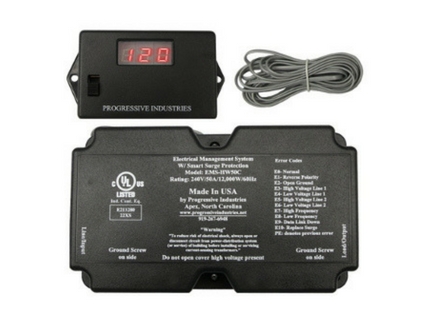



Once I could access the wire I had to cut it to splice in the EMS. 50 amp wiring is pretty thick and stiff. I had a hard time cutting and working the wires into the correct connections and it took a little bit of time and patience. Once you have the wire cut, you feed it into the EMS, strip the ends of each individual wire, follow the diagram provided and torque down the set screws. Full instructions can be found HERE.

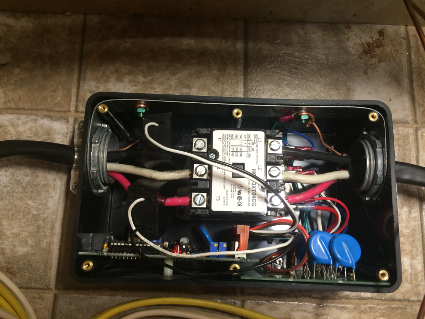


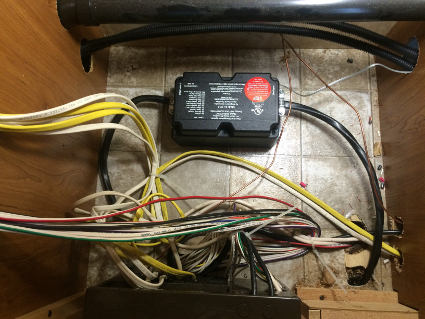
The unit also comes with a remote display which uses a telephone type wire and plugs. You just mount the display where you want it, run the wire from the EMS to the display and plug it in. Since this constantly blinks I decided to mount it in my basement area near my water hook up panel. This works out nice for me and checking it is part of my set up procedure. Once I plug in the trailer it takes a minute for the EMS to go through its setup. If there is any problem the display will show a code. I have a picture of the codes on my phone so I know what they mean. In the two years I've had this it has saved me a few times from bad electric from the campsite pedestals. If you're interested in purchasing one of these I put a couple links below.

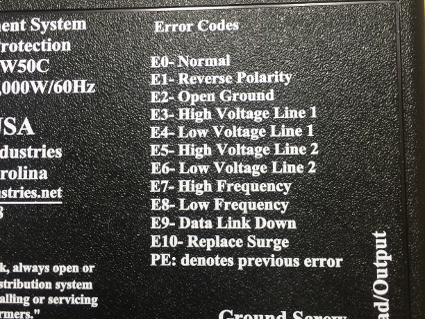
Here is a very good video showing the installation of a Progressive Industries EMS.
One last tip. If you are dry camping and need to use an inverter generator the EMS will throw an error code and not let the generator's power into your trailer. The problem is that these generators use what’s called a floating neutral or unbonded neutral/ground. What you need to do is to use a "Ground-Neutral Bond” jumper cable for your Honda or Yamaha generator which will allow you to power your RV through its voltage protection device.
It’s pretty simple to wire a special “Ground-Neutral Bond” jumper cable. You can obtain or make a dummy 15 or 20 amp “Edison” plug with the Neutral (white) and Ground (green) screws jump together with a piece of 12 or 14 gauge wire (see photos below). This G-N jumper plug can be plugged into one of the generator’s unused 20-amp outlets, and the entire generator’s electrical system will be N-G bonded. You can then use the other 20-amp Edison outlet or the 30-amp outlet to power the RV.
Just be sure to mark this plug specifically for its intended purpose. It won’t really hurt anything if it’s plugged into a correctly wired home outlet, but it will create a secondary G-N bonding point that could induce ground loop currents and create hum or buzz in a sound system. So this is a generator-only G-N bonding plug which should be only plugged into a portable generator while powering your RV. For more on this subject CLICK HERE.

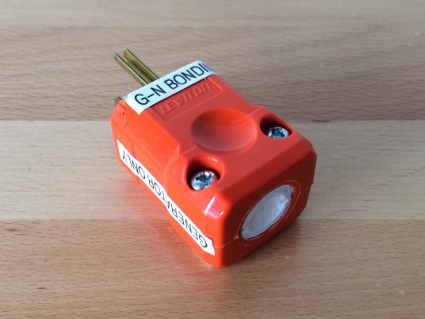
Questions or comments? Contact us today.